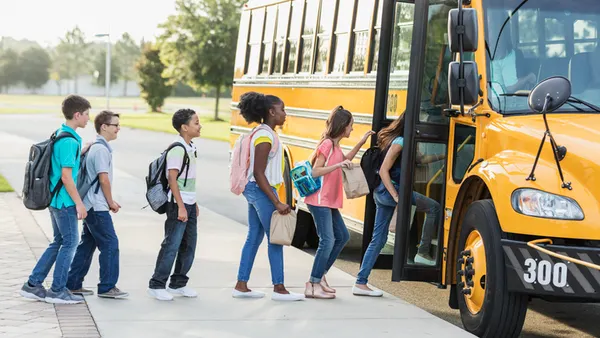Dive Brief:
- St. Louis Superintendent Kelvin Adams is digging into the district's suspension trends after a recent UCLA report ranked Missouri as No. 1 state for discrepancies in the number of black students suspended compared to white students.
- While the district has decreased its overall suspension rate by almost 66% since the 2008-09 school year, it still has more suspensions than any other district in the state, and this fact coupled with the demographic splits is troubling.
- According to Adams 18% of suspensions in the first semester occurred because of "disrespect," an offense left to a teacher's subjective interpretation.
Dive Insight:
The UCLA report, created by the university's Center for Civil Rights Remedies, found that in the 2010-11 school year, 23.2% of black secondary students were suspended nationwide, compared to only 6.7% of white secondary students. So the issue St. Louis is looking into is one that, in fact, many districts should reflect on — especially given the ties between suspensions and the increased likelihood that a student will drop out of school and be pushed into the criminal justice system.
To give a leg up to St. Louis and other districts wanting to make a shift, take a look at the March 2014 paper from the University of Indiana's Equity Project, "How Educators Can Eradicate Disparities in School Discipline: A Briefing Paper on School Based Interventions." According to that report, schools can avoid conflict by providing supportive relationships for all students; increasing academic rigor and holding all students to high expectations; making sure the teaching is culturally relevant and respectful of students' real lives; and creating bias-free classrooms where students feel included and comfortable.
News of racial discrepancies in suspensions came to a major low last March when the U.S. Department of Education’s Office for Civil Rights released a paper that found that while black students represent 18% of preschool enrollment they account for 42% of students suspended once and 48% of students suspended more than once. When announcing that report, Education Secretary Arne Duncan said the data highlighted "places that are delivering on the promise of an equal education for every child and places where the largest gap remain. In all, it is clear that the United States has a great distance to go to meet our goal of providing opportunities for every student to succeed.”











